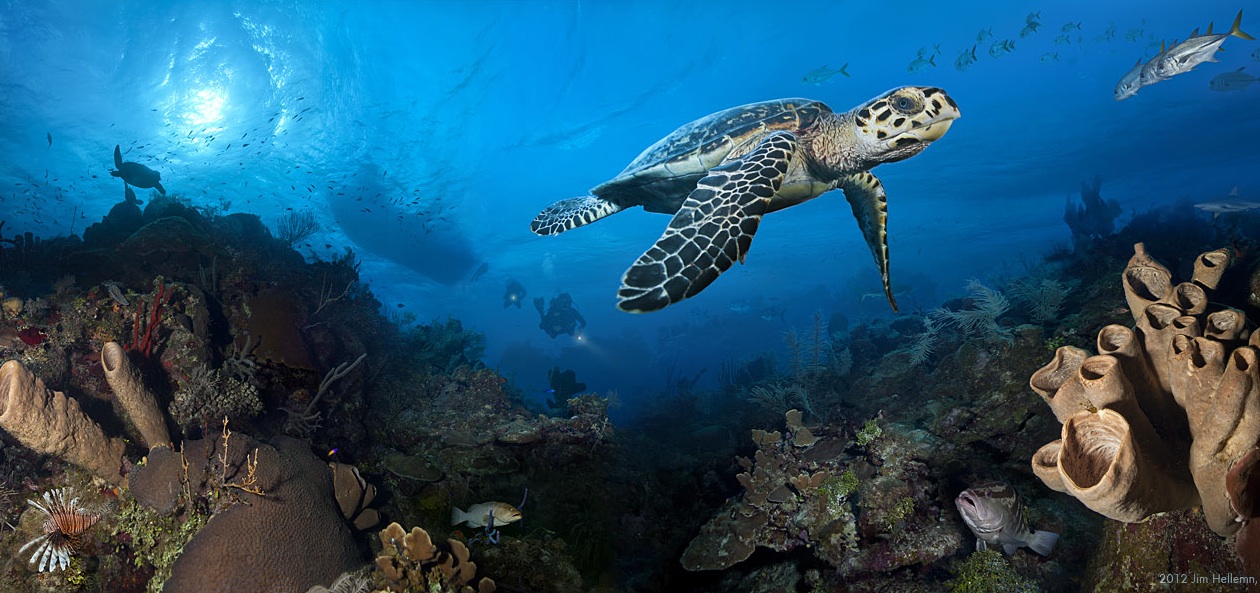 For a better experience on Ocean Frontiers, Update Your Browser.
For a better experience on Ocean Frontiers, Update Your Browser. Lionfish Hunter Certification in the Cayman Islands

PADI Lionfish Hunter Certification
The Indo-Pacific lionfish is a beautiful but invasive species that has wreaked havoc on Caribbean coral reefs. With no natural predators in the Atlantic, their populations have exploded, decimating native fish populations and disrupting the delicate ecological balance. But as a diver, you have the power to make a difference! Our unique PADI Distinctive Specialty Lionfish Hunter Certification empowers you to become part of the solution. Learn how to safely and responsibly cull these invaders, helping to protect the reefs you love to explore. By joining the fight against lionfish, you'll gain valuable skills, contribute to conservation efforts, and leave a lasting positive impact on the underwater world.
Reasons to get Lionfish Certified
- Help protect the reef ecosystem by removing invasive lionfish
- Learn safe and responsible culling techniques
- Gain experience with specialized equipment like hawaiian sling spears
- Contribute to conservation efforts in the Cayman Islands
- Enjoy the satisfaction of making a positive impact
Prerequisites
- Must be 15 years or older
- Certified Open Water Diver or higher
- Must not be allergic to bee stings
- Medically fit to scuba dive (review Medical Questionnaire here)
- Previous dive with Ocean Frontiers within 12 months
- Must not be your first dive of the trip
Course Cost and Breakdown per person
- PADI Invasive Lionfish Tracker Speciality = US $299
- 1/2 Day Classroom session led by your PADI Instructor
- Instruction on the 2 training dives
- Use of Hawaiian sling spear and safety equipment
- PADI eCard Certification
- Permission & Equipment to hunt lionfish on all subsequent dives with Ocean Frontiers
- The course requires two lionfish culling dives which
IS NOT INCLUDEDin the course fee
What's Not Included
- Cost of boat dives
- Nitrox tanks
- Dive rental gear
- Dive Computer (we require all divers to have a dive computer)
- PADI eLearning is not available for this specialty certification class.
- Gratuities
The Ocean Frontiers Difference
Reader's Choice - Caribbean's Best Dive Operator
First Class Newton Dive Boats & Training Dive Pool
Highest Quality Rental Equipment
Frequently Asked Questions
Click/Touch the bolded text to read more.
Can I spear lionfish on the dive boats if I have previous experience despite not having an official certification?
No, the Cayman Islands Department of Environment DOE has strict regulations with respect to who can spear lionfish.
Is there eLearning for the Lionfish Hunter course?
No, PADI does not currently have eLearning for the Lionfish Hunter certification. The instructor will conduct the knowledge development in a 1/2 day classroom session
Do I need to bring my own Lionfish culling equipment?
No, Ocean Frontiers will provide all the necessary equipment, including a licensed Hawaiian sling spear, collection tube, Thermos of hot water, and an ice chest for neutralizing the Lionfish venom.


